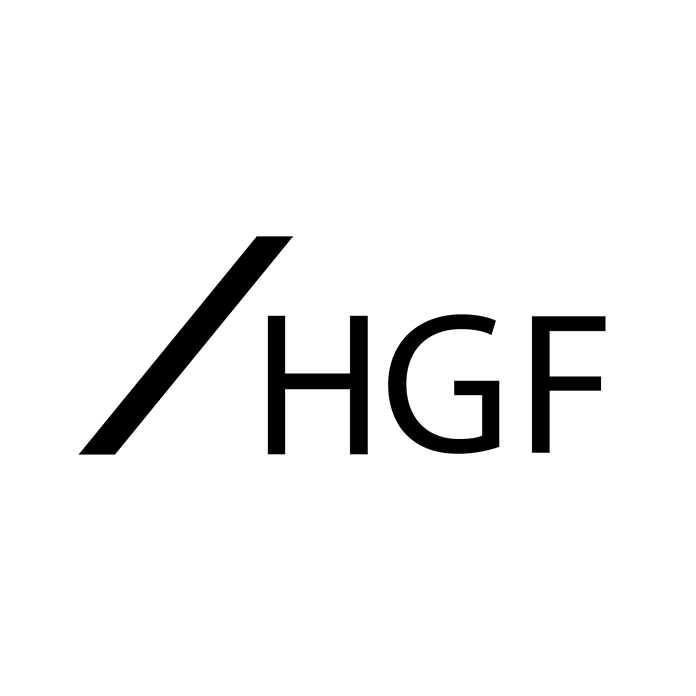Blogs
IP Ingredients: Summer Case Law Review 2025
July 2025
As the British summer swings once again between sunburn and showers, it’s a great time to take stock of what the first half of the year has delivered by way of IP decisions. In this review, we explore some of the stand-out cases and consider what lessons they offer for IP owners in the food and drink industry.
Trade Marks
Tetra Laval Holdings & Finance SA v Lami Packaging (Kunshan) Co, Ltd, EUIPO, R 12/2024/-4
Although this decision technically issued in December 2024 (just missing our winter case law review), it is worthy of inclusion in this summary as it discusses a topic not often heard – namely, whether a 3D shape registration could be protected as an EU Trade Mark Registration or was excluded as being functional.
Tetra Laval owns EU Trade Mark Registration No. 001620566 for the 3D shape of its Tetra Brik® packaging covering “packaging containers and packaging material made of paper or made of paper coated with plastic material” in class 16 (shown below). Lami packaging filed a cancellation action against that registration arguing that the mark consisted exclusively of a shape necessary to obtain a technical result, which is precluded by Article 7(1)(e)(ii) EUTMR, and that it had been filed in bad faith.

https://euipo.europa.eu/eSearch/#details/trademarks/001620566
In the initial decision, the EUIPO Cancellation Division agreed with Lami packaging, finding that the shape’s essential features – octagonal cross-section, corner panels, and sealing fin – were dictated by technical considerations such as material efficiency and stability, and thus excluded from registration.
On appeal, the Board of Appeal took a more nuanced view and reversed the Cancellation Division’s decision, clarifying that the ‘technical result’ exclusion applies only where the shape’s essential characteristics perform a technical function in the use of the product, not merely in its manufacture. Key findings included:
- The shape’s benefits (e.g. improved volume-to-material ratio, stackability, and handling) were relevant to production and logistics, but did not directly affect the use of the packaging by purchasers (i.e. foodstuff intermediaries, not the end consumer).
- The presence of alternative shapes achieving similar results did not automatically render the contested shape functional.
- The Board rejected the argument that the overall aesthetic impression could override the functionality analysis, noting that ornamental value is irrelevant if all essential features are functional.
- The bad faith claim was dismissed as it relied entirely on the functionality argument, which had failed.
This decision highlights the principle that functionality exclusions under Article 7(1)(e)(ii) EUTMR must be assessed in light of the product’s use by the relevant public, in this case the foodstuff intermediaries, not its manufacturing process. It also underscores the evidentiary burden on cancellation applicants to demonstrate that a shape mark confers a monopoly over a technical solution sought by competitors.
Key take-away: Brand owners in the packaging and food and drink sectors may take some comfort in the Board’s nuanced approach, which allows for the protection of distinctive shapes that offer manufacturing efficiencies, provided those efficiencies do not translate into technical functions in use. However, careful considerations must still be given to the design rational and any prior patent disclosures. If your packaging design offers technical benefits, ensure that any trade mark application focuses on the shape’s distinctiveness rather than its function. Be prepared to demonstrate that the shape does not perform a technical function in use – such as dispensing or preserving the product – but instead contributes to brand identity.
Babek International Ltd v Iceland Foods Ltd [2025] EWHC 547 (IPEC)
In this case, Babek International sued Iceland Foods for trade mark infringement, alleging unauthorised use of its registered figurative mark (shown below – UK TM No. UK00907527963), which includes the description “Gold oval with embossed BABEK writing. Colour Claimed: Gold, black.” (the “BABEK Mark”).

UK Trade Mark Registration No. UK00907527963
Iceland admitted using an identical sign for identical goods but raised two defences: (1) that it had a licence from a third party, and (2) that the BABEK Mark was invalid for lack of clarity and precision under the Sieckmann criteria[1] (clear, precise, self-contained, easily accessible, intelligible, durable and objective). Iceland argued that the BABEK Mark’s description was ambiguous, potentially 3D, lacking Pantone references, and imprecise in its depiction of colour and shape.
The Court rejected Iceland’s application for summary judgement, finding that the BABEK Mark was not invalid. It held:
The mark was clearly a figurative mark, and the description did not introduce ambiguity.
The embossed effect was a notable feature but did not render the mark unclear.
The absence of Pantone references or exhaustive detail did not undermine the mark’s clarity or objectivity.
In conclusion, the Court found that the mark satisfied the Sieckmann criteria and was validly registered. The case will now proceed with the Court still to consider the role of the alleged licensor.
Key take-away: The decision reinforces that while clarity and precision are essential, courts will adopt a practical approach to trade mark descriptions. If your brand identity relies on stylised logos, ensure that your trade mark applications include clear and consistent visual representations. Where a description is needed, avoid ambiguity by specifying key design features but don’t over complicate with unnecessary technical detail.
Nissin Foods Holdings Co., Limited v MomoIP LLC [2025] EWHC 561 (Ch)
Nissin Foods sought to revoke MomoIP’s “MOMOFUKU” trade mark registration for non-use, arguing that it had not been genuinely used in the UK during the relevant five-year period. The Hearing Officer had found in favour of MomoIP initially, relying on evidence including cookbook sales, pop-up restaurants and a Nike® collaboration.
The High Court overturned the Hearing Officer’s decision, finding that the evidence did not establish genuine use in the UK:
Cookbook sales: The High Court concluded that the Hearing Officer had misinterpreted Amazon reviews as sales and found that there was no evidence of UK-specific sales.
Pop-up restaurants: Only one event fell within the relevant period, and it lacked branding or evidence of UK targeting.
Nike® collaboration: The product did not bear the mark, and the campaign did not reference the restaurant or brand.
Website traffic: UK traffic to MomoIP’s website was minimal and insufficient to demonstrate targeting of UK consumers or use.
The Court concluded that MomoIP had failed to demonstrate genuine use and revoked the registration. As a consequence, MomoIPs application to invalidate Nissin’s registration for the same mark fell away as they no longer had a basis on which to bring the action. This leaves Nissin as the the owner of the most senior trade mark registration for MOMOFUKU in the UK.
Key take-away: If you’re expanding into or maintaining a presence in the UK, make sure your marketing, sales and promotional activities are well-documented and clearly linked to your registered trade marks. Keep records of UK specific campaigns, sales data and branded materials. This is especially important if your brand operates globally but has limited physical presence in the UK.
Patents
Mid-year review of food tech decisions at the European Patent Office
Of the decisions published so far in 2025 by the EPO’s Boards of Appeal, 30 opposition appeals were in the food tech field (IPC code A23). The outcomes of these 30 cases can be broken down as follows: In 15 cases the patent was revoked; in 6 cases the patent was maintained in amended form; in 7 cases the patent was maintained as granted; and 2 cases were remitted to the opposition division for further consideration. This tells us that oppositions at the EPO remain an extremely powerful way of challenging a patent across Europe.
Decisions in which the patent was ultimately revoked were most often made on the grounds of a lack of inventive step. For example, in T 2642/22 (Patentee: Lactalis Group; Opponent: Fresenius), T 959/23 (Patentee: Perfetti Van Melle; Opponents: Mondelez & Wrigley) and T 856/23 (Patentee: FrieslandCampina; Opponents: Fresenius & Nestlé), the lack of data demonstrating a technical effect of the claimed invention over the prior art resulted in the Board defining the problem to be solved as the mere provision of an alternative. The solution provided by the invention was then considered to be obvious. While experimental data is not necessarily required by the EPC for patentability, it can still make the difference between a weak and a strong inventive step argument. For more on the importance of supporting data in food tech patents, see our earlier post here.
One of this year’s most newsworthy cases in the food tech field is the appeal against the EPO’s decision to revoke Impossible Food’s patent (EP2943072B1) for a meat substitute product, reported in our blog here. As well as being part of one of the first major disputes in the alt protein space, the case is interesting in that the decision to revoke the patent was based on a lack of sufficiency of disclosure. Impossible Foods was tripped up by the data in its own patent which showed that some of the claimed combinations of flavour precursors did not result in the taste and smell of meat – the alleged technical effect of the invention. Although the patent was saved on appeal, this came at the cost of its product claims which were deleted, again highlighting the importance of data in food tech patents.
T 2178/22 Mutant barley plants
Another case worthy of particular attention is the opposition against EP2373154, owned jointly by Carlsberg and Heineken. Claim 1 of the patent is directed to a method for preparing a barley based beverage with low levels of one or more off-flavours. The method uses a mutant barley plant having three mutations that result in a loss of the enzymes LOX-1, LOX-2 and MMT. Further independent claims are directed to the mutant barley plant itself (claim 7), a malt composition (claim 12) and a barley based beverage (claim 13).
Background
The patent was opposed by two parties, one being the organisation “No Patents on Seeds!”. The opponents argued that the claimed mutant barley plant was excluded from patentability under Art. 53(b) EPC which precludes the patenting of essentially biological processes (i.e. natural crossing and selection) for the productions of plants of animals. An earlier decision (G2/12, known as “Broccoli/Tomato II”) of the EPO’s Enlarged Board clarified that animals and plants resulting from essentially biological processes were not excluded from patentability under Art. 53(b). This decision was later reversed in G3/10 (“Pepper”) following the introduction of new Rule 28(2) EPC which states that European patents cannot be granted for plants or animals exclusively obtained by means of an essentially biological process. However, G3/19 held that Rule 28(2) does not apply to patents filed before 1 July 2017. Since the Carlsberg/Heineken patent was granted before this date, the opposition division (OD) found that the claimed plants were not excluded from patentability under Art. 53(b) EPC. The OD also found the claimed subject-matter to be novel and inventive, and the oppositions were rejected.
EP2373154 is not the first patent owned by Carlsberg and Heineken to be challenged by “No Patents on Seeds!”. Two earlier patents (EP2384110 and EP2373154) relating to mutant barley were also opposed with different outcomes: EP2384110 was maintained as granted on appeal, while EP2373154 was revoked during appeal proceedings.
Appeal proceedings
The opponents appealed the decision to maintain EP2373154. The appeal proceedings centred on the OD’s rationale for finding all claims inventive. Although both opponents had objected to all claims on the grounds of a lack of inventive step, the opposition division’s decision only gave explicit reasons about why the subject-matter of claim 7 was considered inventive. The Board of Appeal considered that this reasoning could not be extended to the other independent claims, and expressed doubts that the mutant barley plant of claim 7 would necessarily result in a barley based beverage with reduced off-flavours. As such, the Board found that the opposition division’s decision was not sufficiently reasoned with respect to claims 1-6 and 12-16, resulting in a violation of the opponents’ right to be heard. The case was therefore remitted back to the opposition division for further review.
Significance
The fate of EP2373154 remains to be determined. Even if the technical effect allegedly associated with the mutant barley plant is not found to extend to the method or beverage claims, Carlsberg/ Heineken could restrict the patent to the plant claim, thereby protecting any use of that plant. Whatever the findings of the second round of proceedings before the opposition division, the outcome is again appealable. The dispute is therefore set to continue for some time.
The use of patents to protect plants is a contentious issue in Europe, evidenced by the large number of organisations supporting “No Patents on Seeds”. It has also been the subject of considerable discussion over the last year, since the EU Commission’s proposal to ban patents on all plants obtained by New Genomic Techniques (“NGT” plants). The Commission’s initial thinking was that a patent ban would help breeders and farmers in the EU avoid legal uncertainties, increased costs, and dependency on large agritech companies for supply of plant varieties. The proposed ban was, however, far reaching and consequently was met with concern that it could require significant amendment to European legislation and in fact reduce agricultural productivity.
In a positive move for innovators, earlier this year the proposed patent ban was replaced by draft legislation which sets out a voluntary system for restricting use of the reproductive material of NGT plants for cultivation of reproductive material, and a requirement for labelling.
Key take-away: Patents remain available for genetically modified plants, NGT plants, and plants produced by an essentially biological process provided the application has a filing date before 1 July 2017.
For any questions relating to the above, please contact the authors, Tanya Waller [email protected] or Cerys Carter [email protected] for trade marks and Jennifer Bailey [email protected] or Punita Shah ([email protected]) for patents.
[1] Sieckmann v Deutsches Patent-und Markenamt, Case C-273/00, [2002]
This article was prepared by Tanya Waller, Jenny Bailey, Cerys Carter and Punita Shah































